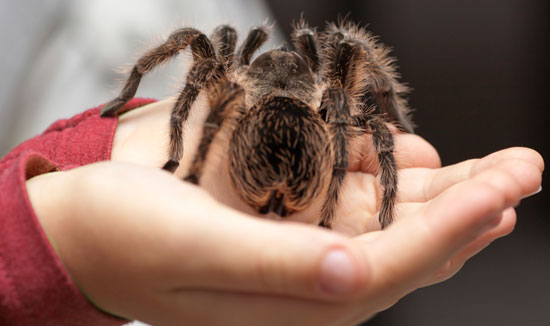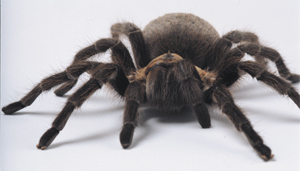How to Keep Spiders as Pets
Spiders can make fascinating pets. Here are a few steps to get you started keeping spiders.

Step 1: Catch a spider
Spiders are all around us, indoors and out, so they’re not hard to find. Some species can bite and a few are venomous. Learn about dangerous spiders in your area before heading out. It’s easy to safely catch a spider by using a small jar. Gently coax it into the jar using the lid. Spiders will eat each other, so keep only one per jar.
Step 2: Prepare a cage
Large spiders do well in the inexpensive plastic terrariums available from pet stores. Smaller ones can be kept in jars or plastic containers if air holes are drilled into the lid or sides. Be sure the holes are small enough to prevent escape.
Potting soil makes good cover for the cage bottom. Sticks, dead leaves or artificial plants provide structure for hiding, climbing and webbing.
Step 3: Water
Depending on the size of the spider, anything from a plastic bottle cap to a small bowl can serve as a water dish. Spiders also drink water sprayed on webbing, but you should never allow the cage to become damp.
Step 4: Feeding
Offer insect prey once or twice a week. Crickets are available from pet shops, or you can collect insects outdoors if no insecticides have been sprayed in the area.
Step 5: Observing
Watch your spider and take notes on its behavior. You won’t believe what happens in the spider’s web until you’ve visited it yourself!
PREFERRED PETS
 Not all spiders do well in captivity. Active hunters are usually easier to keep than web builders. Here are a few that make good pets.
Not all spiders do well in captivity. Active hunters are usually easier to keep than web builders. Here are a few that make good pets.
Tarantulas: Some species exceed 10 inches in legspan. They’re by far the most popular pet spiders and can be bought in pet stores.
Wolf Spiders: Some can be more than three inches in legspan. Large specimens do best in terrariums with lots of floor space.
Jumping Spiders: Although small and rarely exceeding half an inch, their jumping ability is amazing. Many species are brightly colored and can easily be kept in jars.
Fishing Spiders: In captivity, these large spiders appreciate vertically arranged pieces of bark for climbing. They’re very fast, so use caution when capturing them.
Grass Spiders: These spiders build funnel-shaped webs in grass, bushes and on buildings. In captivity, they will build extensive webs inside their cage.
LEARN MORE: Click here to see photos of a spider expert’s seven favorite spiders
Can i also use a wooden box for a spider
that was used for a bearded dragon
Sure, I have even used cardboard boxes.
I have a small jumping spider ,but I still don’t know to feed it.
i have spiders all over my yard.
Good for u
I found a male hobo spider and he’s my roomate. He runs away from me though, but it’s cool because hobos are nocturnal.
I caught mine by hand and took him home in a dixie cup.
If you chase them, they run.
I have a barn spider as a pet that has made a egg sack she refuses to leave it and build a web is this normal for the species?
I love those, and yes, they will defend their egg sac til they die.
Maybe one of the hatchlings will survive if you can find gnats or fruit flies.
I own a beautiful 3 month old chilean rose hair tarantula she’s lovely and there so humid and easy to keep as pets so if your going to go for a tarantula that’s the species I would recommend
I have a pet house spider I’ve had her for about a week now and she has laid 2 eg sacks LOL going to need a bigger cage 🙂
Get a 20 gallon long tank put wood chips
I caught a wolf spider with an egg sac wich is good ’cause I’m starting a collection so I don’t need to find many ones
To:Boy’s life magazine
Wolf spiders are great, but you are going to have to separate the spiderlings when they leave mom. they are cannibals.
Start collecting clean pill bottles.
Wolf spiders make exelent pets. I caut a rabid wolf spider.Its awesome!!!!!!
They are great aren’t they.
i reccomend going and buying a tarantula they are inexpensive and so are crickets to feed them i reccomend a chilean rose hair tarantula as a 1st